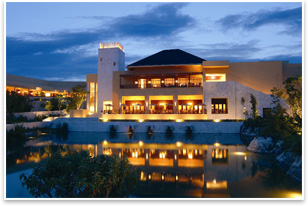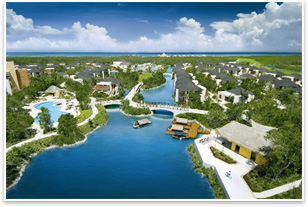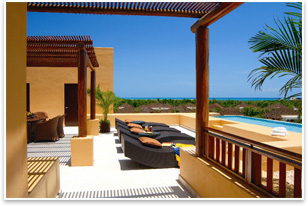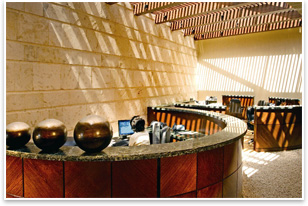
| Lush Life: Fairmont Mayakoba three’s Mayan Rivieria resort is a part of the jungle
Summary: The Fairmont Mayakoba is a luxury resort on the Mayan Riviera that maintains and uses the area’s natural ecology to give guests a vacation experience steeped in native flora and fauna. Developed after an extensive and multidimensional study of the natural landscape, the resort lessens its environmental impact by being constructed from native and recycled materials.
This isn’t at all by accident, but is instead the key to the identity of the Fairmont Mayakoba. It’s a luxury hotel on the Yucatan Peninsula that works with local ecology to place visitors in a tranquil, rustic, and isolated jungle setting. The open and breezy four-unit standalone bungalows bring lush mangroves up to the windows and the ocean (the actual coast is a quarter mile away) to the doorstep through a series of languidly curving lagoons. The experience is light years away from the high-rise cinderblock vacations offered by Cancun hoteliers, even though the Fairmont is only 42 miles to the south. The Fairmont Mayakoba is a development that shrinks into its setting and encourages interaction with the natural, unspoiled environment instead of boasting commanding ocean views atop skyscrapers. “The goal in this project was to take what would be in program a 400-unit property and make it feel like it was 200 rooms,” says Gary Koerner, AIA, the lead designer for the project and President of the Dallas-based architecture firm three. “The jungle helped us with that.”
three designers used a deep-red native wood called sapote in the interiors, exteriors, and on railings. To further reduce the carbon footprint of the development, they also quarried from the building site a cream-colored limestone for the bungalows. The resulting units are an easy and airy balance of thatch-roofed tropicalism and dark-wood decadence. Instead of steamrolling a thin strip of coastline, three and the site’s developers (Madrid-based OHL) left the local ecology as intact as possible by having builders hand-machete the surrounding mangroves to prepare sites for construction. “We wanted the guests to submerge themselves in the jungle,” says Koerner. And to submerge themselves in the local fauna; herons and cormorants abound, and manatees float in the lagoons equipped with GPS trackers for their protection, according to Travel + Leisure.
Koerner says this type of green-focused development is rare in Mexico, but the allure of native authenticity at luxury resorts has been so successful that, according to Travel + Leisure, Cancun hoteliers are re-branding their developments to be part of the Mayan Riviera. Completed in October 2006, the Fairmont Mayakoba is the first of six planned developments, and though the resort might revel in its illusion of self-effacing smallness, this desire for eco-friendly intimacy is big and growing. |
||
Copyright 2007 The American Institute of Architects. All rights reserved. Home Page |
||
news headlines
practice
business
design





